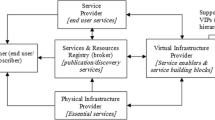Abstract
The evolution of the router architecture has gradually changed from a conventional architecture, which processes all functions on one operating system/processor, to a remote architecture, which can be split into a control plane and a data plane with their respective functions. The control plane is mainly responsible for the operations of the routing/signaling protocols and the data plane is responsible for forwarding the large amount of data packets. Furthermore, the remote architecture facilitates the realization of virtual routers. Virtual routers are created basically by logically splitting a routing processor in the control plane into many virtual routing units that have independent routing tables, use independent protocols, and connect to the external network through different interfaces. A virtual router with a remote architecture is more flexible and efficient than conventional routers; however, it requires an additional communication mechanism between the control plane and the data plane. We propose using existing tunneling techniques to provide a communication mechanism between the control plane and the data plane. Many design and implementation issues on the software architecture and protocol ramification are identified. We discuss solutions to these issues and successfully demonstrate a working virtual router with our proposed solutions.






















Similar content being viewed by others
References
Aweya J (2000) On the design of IP routers, part 1: router architectures. J Systems Archit 46:483–511
Yang L et al (2004) Forwarding and control element separation (ForCES) framework, vol 3746. IETF RFC
Perkins C (1996) IP encapsulation within IP, vol 2003. IETF RFC
Hanks S et al (1994) Generic routing encapsulation (GRE), vol 1701. IETF RFC
Hanks S et al (1994) Generic routing encapsulation over IPv4 networks, vol 1702. IETF RFC
Kent S, Atkinson R (1998) Security architecture for the internet protocol, vol 2401. IETF RFC
Kent S, Atkinson R (1998) IP authentication header, vol 2402. IETF RFC
Kent S, Atkinson R (1998) IP encapsulating security payload (ESP), vol 2406. IETF RFC
Harkins D, Carrel D (1998) The internet key exchange (IKE), vol 2409. IETF RFC
Townsley W et al (1999) Layer two tunneling protocol (L2TP), vol 2661. IETF RFC
Ishiguro K et al (2006) A routing software package for TCP/IP networks (Quagga 0.99.4). www.quagga.net
Moy J (1998) OSPF version 2, vol 2328. IETF RFC
Coltun R et al (1999) OSPF for IPv6, vol 2740. IETF RFC
Author information
Authors and Affiliations
Corresponding author
Rights and permissions
About this article
Cite this article
Hou, TC., Chan, MC. & Yu, CT. Using tunneling techniques to realize virtual routers. Ann. Telecommun. 64, 325–338 (2009). https://doi.org/10.1007/s12243-009-0105-2
Received:
Accepted:
Published:
Issue Date:
DOI: https://doi.org/10.1007/s12243-009-0105-2




